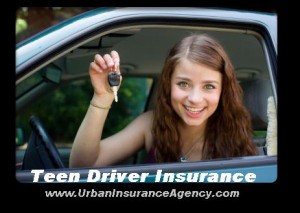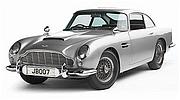How to Select a Safe Car for Your Teen Driver.
As a parent who’s son just got his permit today, this topic is particularly timely. Yes, knowing your child is going to be climbing behind the wheel of a car tends to “Focus your mind”. You get concerned about their driving abilities as well as those around them.
Getting a driver’s license is an important rite of passage for teenagers. It allows them a level of freedom greater than any they had in the past. Most adults can still vividly remember the day they got their license. It is understandable that a new driver is going to view driving with a degree of excitement that most adults have long forgotten, and are going to want to drive every where and time they can. Every parent’s heart stops when they hear a report of another teen driver killed out on the road. The most natural emotion for any parent is to protect their child, and to worry every time their son or daughter gets behind the wheel. A total of 5,610 teenagers ages 13-19 died in motor vehicle crashes in 2004 Based on crashes of all severities, the crash rate per mile driven for 16-19 years-olds is 4 times the risk for older drivers. Risk is highest at age 16. In fact, the crash rate per mile driven is twice as high for 16 year-olds as it is for 18-19 year-olds
The Insurance Institute for Highway Safety (IIHS) and the Insurance Information Institute (III) say there’s something worried parents can do to protect their teens – choose a safe vehicle.
1.Avoid older vehicles. I know few parents are eager to buy their newly licensed teenager a brand new car, but often that might be your safest choice. Each year, car manufacturers develop new and improve on older safety equipment. New cars have under gone more stringent crash tests and benefit from stronger safety cages and constantly improving knowledge about “Crumple Zones” As a result a newer mid-size car with airbags would be a safer choice than an older, larger car without airbags. All cars get safety ratings from the U.S. Department of Transportation, Insurance Institute for Highway Safety, and Insurance Information Institute, check out the rating and information available on car’s safety
2.Don’t let your teen drive an unstable vehicle.
Sport utility vehicles, particularly small high ones, these SUVs have higher centers of gravity. The higher the center of gravity the greater the likelihood the vehicle will “Roll over” in an accident. True SUVs, like the Landover’s, were created to travel over ruff terrain; it is for that reason that they need higher ground clearance. When an inexperienced driver gets behind the wheel and finds them selves needing to engage in abrupt steering maneuvers – Newer drivers are more likely to over-correct their steering this can cause rollovers in these less stable vehicles.
3.Don’t select vehicles with a high performance image
The last thing you want to do is put a young and or inexperienced driver behind the wheel of a 400bhp auto. The faster a car goes from 0-60, the faster a person can find them selves in trouble. Sports cars with large engines, hood- scoops, over-sized wheels and turbocharger or intercoolers, are likely to encourage speeding. One the cars will go faster, and two the peer pressure to “Spin the tires”, drag race, or just plain drive in a risky manner greatly increases Choosing a vehicle with a more sedate image may discourage this behavior, and the chances that your teen will be in an accident. Car insurance is not cheep for a teenage driver, Tickets and accidents will quickly push their rates through the roof. Don’t put your new driver a small automobile. Small vehicles offer much considerably less protection in crashes than larger heavier ones. The simple truth is, all things being equal, a larger car is safer than a smaller lighter car. If a locomotive collides with a Honda, you are safer in the train than the car. However, the safest thing is to avoid the accident all together. Large cars and trucks might be difficult to stop quickly, or more likely to roll. Most mid-to full-size cars offer more than adequate crash protection. Keep in mind the more air bags, the better, and make sure you never put your child in a car with poor tires or brakes. The sad truth is that “Life does not come with a guarantee” it is our job as parents to make the best choices we can, hope we taught our children well then cross our fingers.


